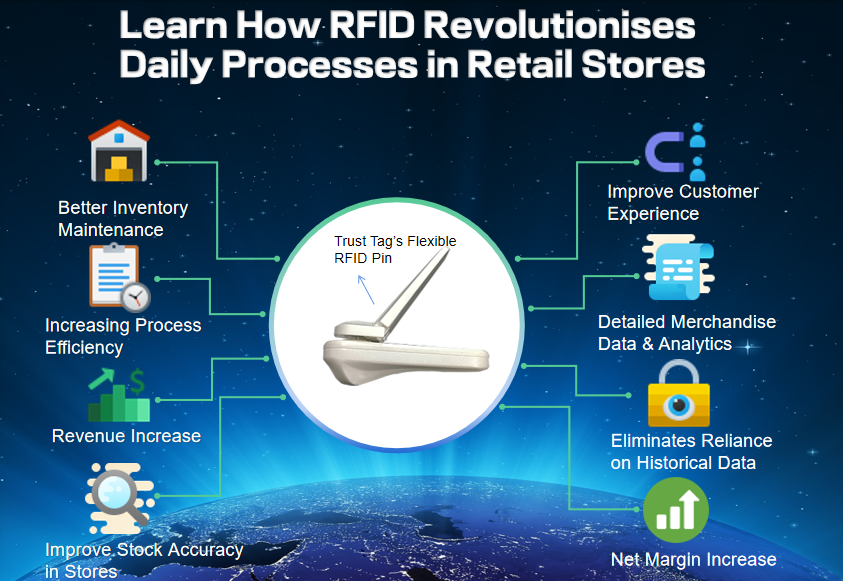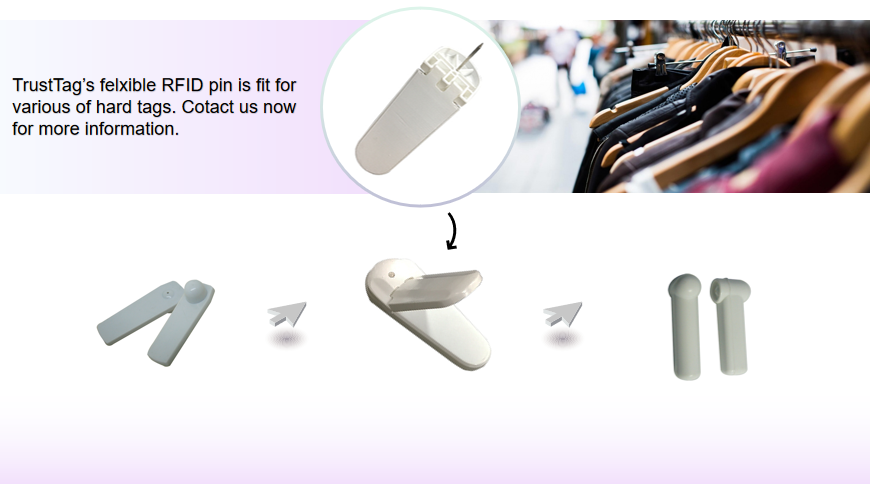Top 1 choice to help retailers speed RFID technology transition
In today’s retail environment, RFID’s applications have never been more important. A number of companies have adopted RFID as a way to control inventories. Modern RFID solutions can reset store economics, lowering costs and boosting revenue. However, the cost of RFID tags can be added to the cost of each product but then the big question is who has to pay for that cost. Should the cost be transferred to consumers or should that be shared between retailers and manufactures? Obviously, the tag cost is huge and it becomes a major barrier for retailers to implement RFID technology.
Now TrustTag’s new RFID pin ET-ST09 has evoled enough to help retailers speed the transition in today’s rapidly changing marketplace. Let’s take a look at it.
Customers will be suprised to learn that this flexible RFID pin is fit for various security hard tags on the market. It helps eliminate the cost of replacing existing security hard tags in reatil stores and allows retailers to leverage EAS system while investing in RFID with the most competitive cost. ET-ST09 realise one-step application process and the biggest cost barrier will be expected to weigh less as the cost of tags reduced.
Retailers have different needs based on the way they operate in stores. Some retailers must manage large inventories in stores. An enhanced visibility on their products help them improve inventory accuracies and avoid out-of-stock and increase their efficiencies. On the other hand, some retailers have small backstore inventories and every item they receive is put directly on their shelves and available to their customers. Inventory management is not their priority, but they need to focus more on customer shopping experience. Therefore, the enhanced visibility of items in stores is expected to promote retailers’ marketing operations. Depending on the way retailers operate and what their priorities are, retailers have to plan on implementing appropriate applications of RFID technology.
With lowering costs, the technology is now more accessible than before. By providing in-store inventory numbers accurate enough to power buy online, pick up in store, and curbside pickup and to boost agility in responding to supply-chain shocks. It can power contactless-checkout capabilities and unlock new customer experiences to create cross-sell opportunities.


